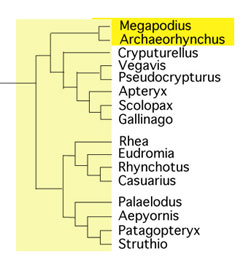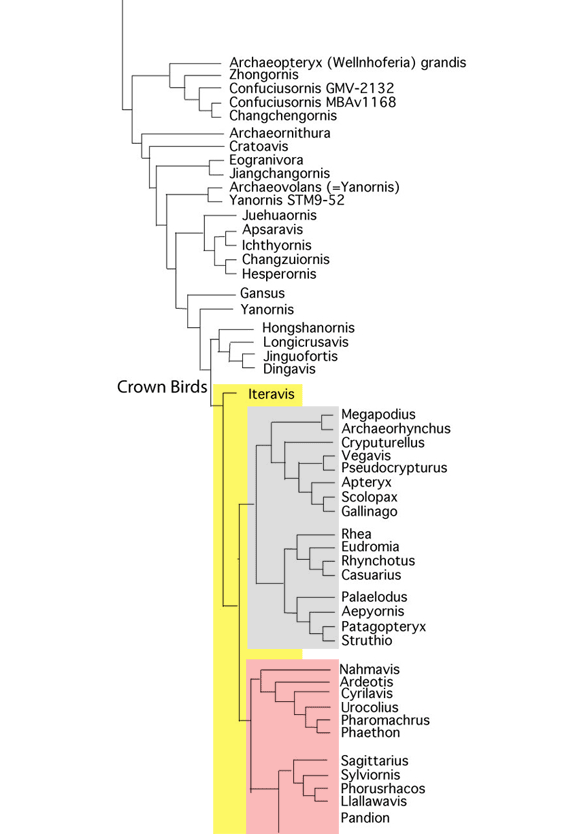Zhou and Zhang 2006 described
“…one of the earliest known beaked ornithurine birds from the Lower Cretaceous deposits in Liaoning, northeast China. The new basal ornithurine, Archaeorhynchus spathula gen. et sp. nov., has a rhynchokinetic skull with toothless jaws.”
Rhynchokinesis = “involves flexing at a point some way along the upper beak”
Ornithurine bird = Ornithurae = Ichthyornis, Hesperornis, and all modern birds.”
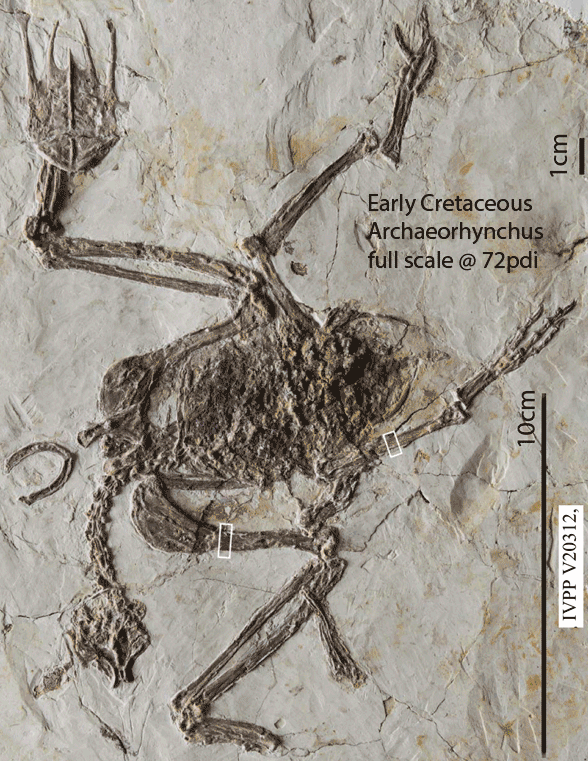
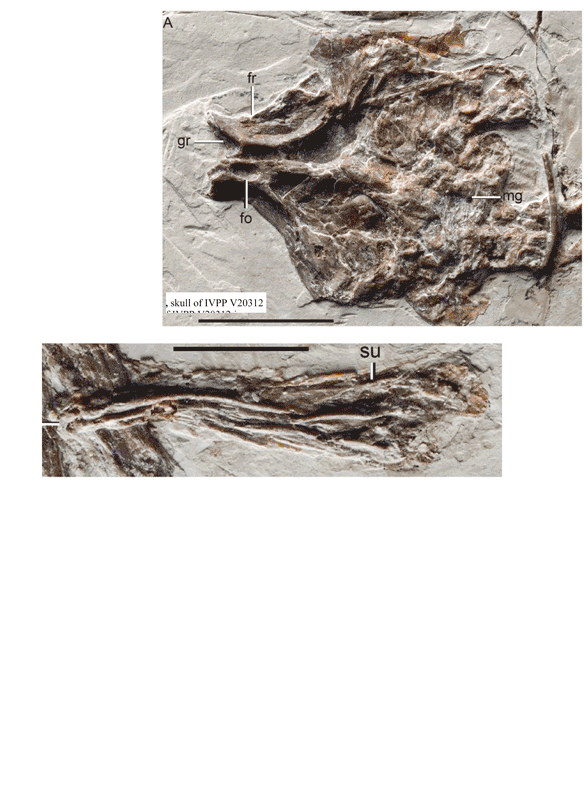
Here
in the large reptile tree (LRT, 2021 taxa. subset Fig. 3, 6) Archaeorhynchus nests with Megapodius, the extant megapode (Fig. 4). It is so similar it might be congeneric. So the LRT confirms that Archaeohrynchus is indeed “one of the earliest known beaked ornithurine birds.”
This is different from Lee et al. 2014,
who nested toothless Archaeorhynchus basal to toothy Jianchangornis in their cladogram based on morphological and molecular ‘clocks’. A toothless taxon basal to a toothy taxon is a problem and molecules deliver false positives too often. No reconstructions or tracings were presented.
Wang and Zhou 2016 identified
Archaeorhynchus as “the basalmost ornithuromorph”.
Ornithuromorph bird = Euornithes = “the most recent common ancestor of all avialans closer to modern birds than to Sinornis.”
In the LRT Sinornis nests within Enantiornithes, far from Megapodius and Archaeorhynchus.
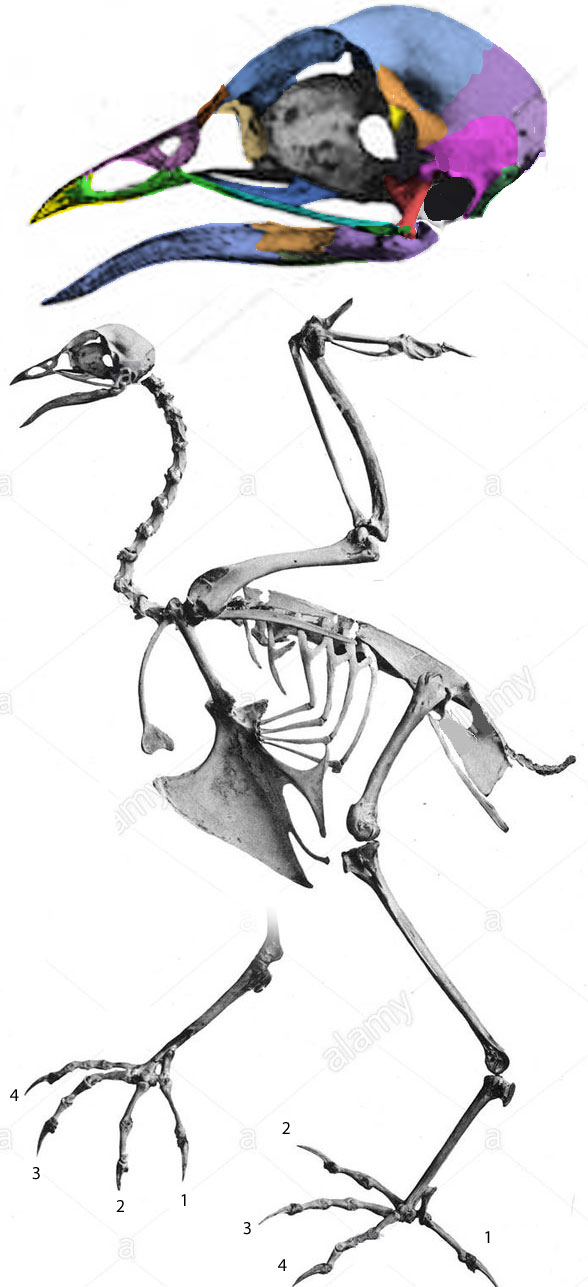
Wang and Zhou 2016 labeled only a frontal in ventral view
and a mandible (Fig. 2). Apparently these authors did not recognize many of the other bones layered and swept together identified here (Fig. 2) using Digital Graphic Segregation (Adobe Photoshop layers function).
You might remember, only a few days ago
extant Megapodius (Fig. 4) based on its basal crown birds nesting, could have given rise to all extant birds with a rapid radiation immediately following the K-Pg extinction event. A few exceptions and issues were noted.
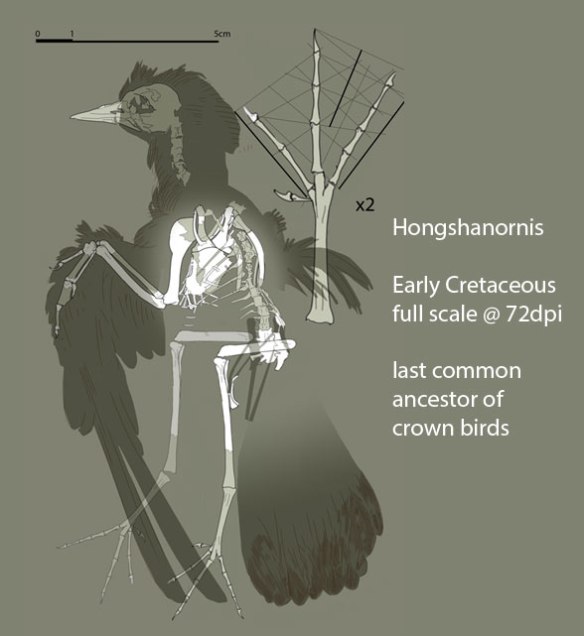
Early Cretaceous Hongshanornis and Archaeorhynchus
provide strong evidence that crown birds radiated more leisurely, throughout the Cretaceous. We simply have to find more crown bird fossils in the Cretaceous than we have at present.

This appears to be a novel hypothesis of interrelationships.
If not, please provide a citation so I can promote it here.
References
Lee MSY, Cau A, Naish D and Dyke GC 2014. Morphological Clocks in Paleontology, and a Mid-Cretaceous Origin of Crown Aves. Systematic Biology. 63 (3): 442–9. doi:10.1093/sysbio/syt110
Wang M and & Zhou Z 2016. A new adult specimen of the basalmost ornithuromorph bird Archaeorhynchus spathula (Aves: Ornithuromorpha) and its implications for early avian ontogeny, Journal of Systematic Palaeontology, DOI: 10.1080/14772019.2015.1136968
Zhou Z and Zhang FC 2006. A beaked basal ornithurine bird (Aves, Ornithurae) from the Lower Cretaceous of China. Zoologica Scripta. 35: 363–373. doi:10.1111/j. 1463–6409. 2006.00234.x

